1lumen selects and reviews products personally. We may earn affiliate commissions through our links, which help support our testing.
Imalent UT10 review
Table of contents
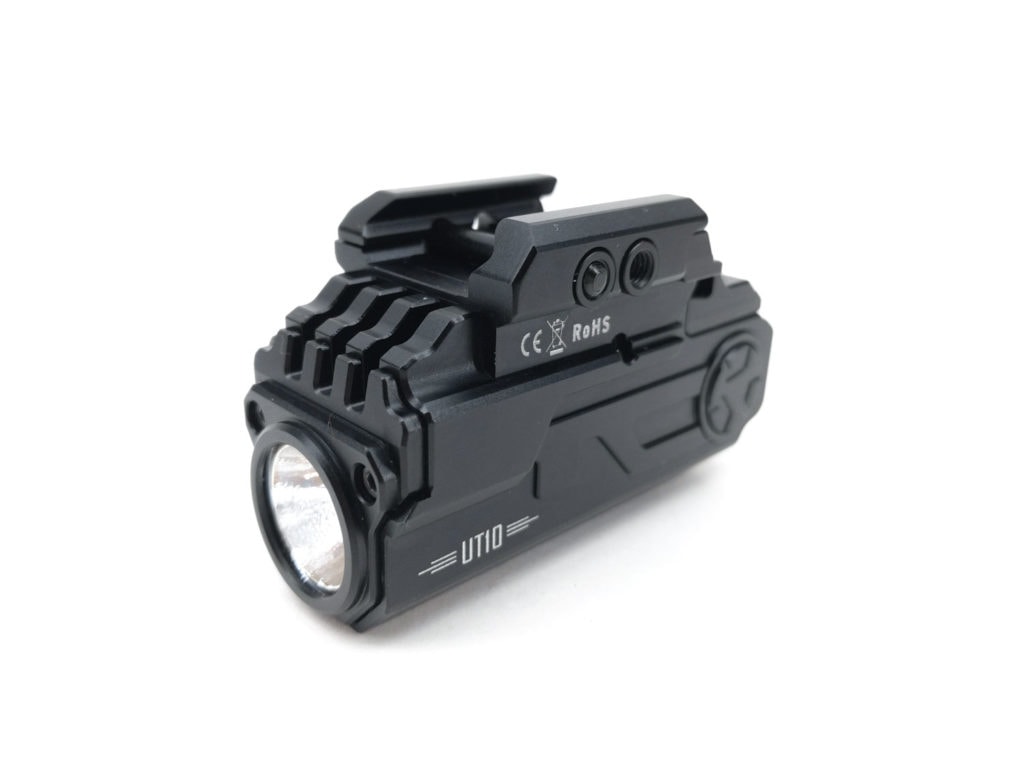
Imalent UT10 Specifications
| Brand/model | Imalent UT10 |
|---|---|
| LED | CREE XP-L Hi |
| Lumens | 1160 lm |
| Beam intensity | 5690 cd |
| Battery config. | 1*18350 (internal) |
| Material | Aluminum |
| Modes | 2 |
| Blinkies | Strobe |
| Reflector | OP (orange peel) |
| Waterproof | IPX4 |
| Review date | January 2021 |
Introduction:
When I think of Imalent, I think of ridiculously high-powered lumen monsters. The Imalent UT10 “Ranger” is not that kind of light. Rather, it’s a pistol-mount light with fairly normal looking specs. Which, to be fair, is what you want in something this compact and with a fairly small internal battery.
Package quality.
The Imalent UT10 came in a fairly nice box. There’s an attractive outer sleeve around a magnet-closure box. A form-fit tray holds the UT10, while another compartment holds the charging cable. So to recap, the box held:
- Imalent UT10 “Ranger”
- Charging cable
- Manual
A bit confusingly, Imalent says that there should be a wrench in the box. One was not included, nor am I sure why one would be required as the retention bolt has a slotted head and reeded edge.
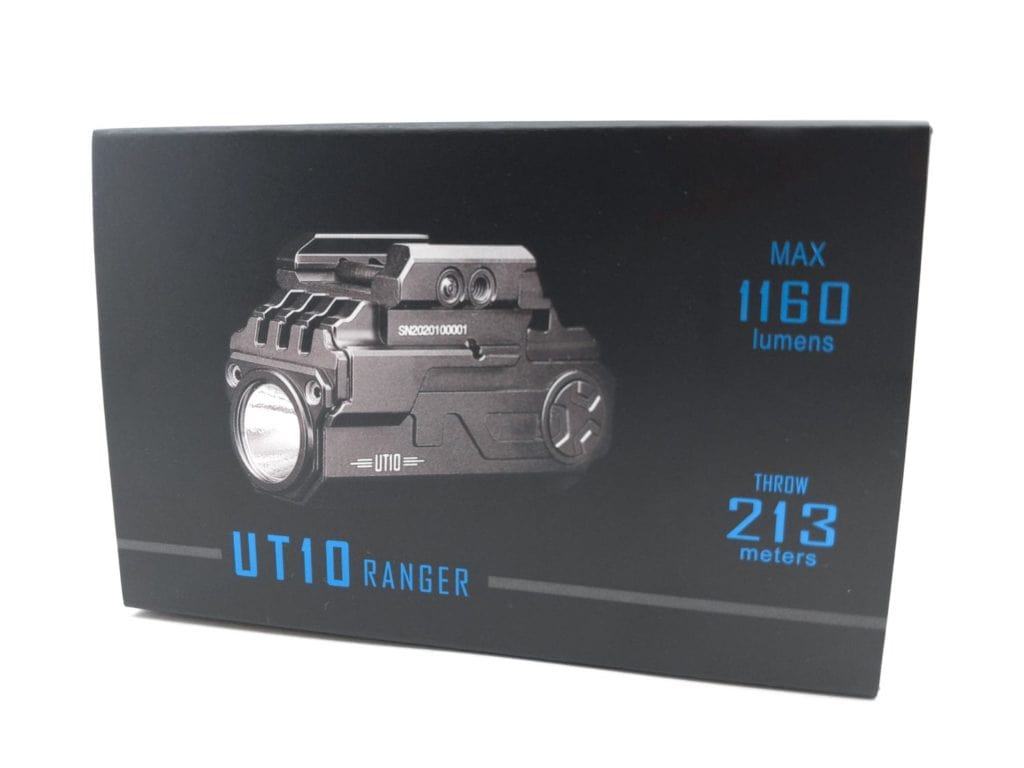
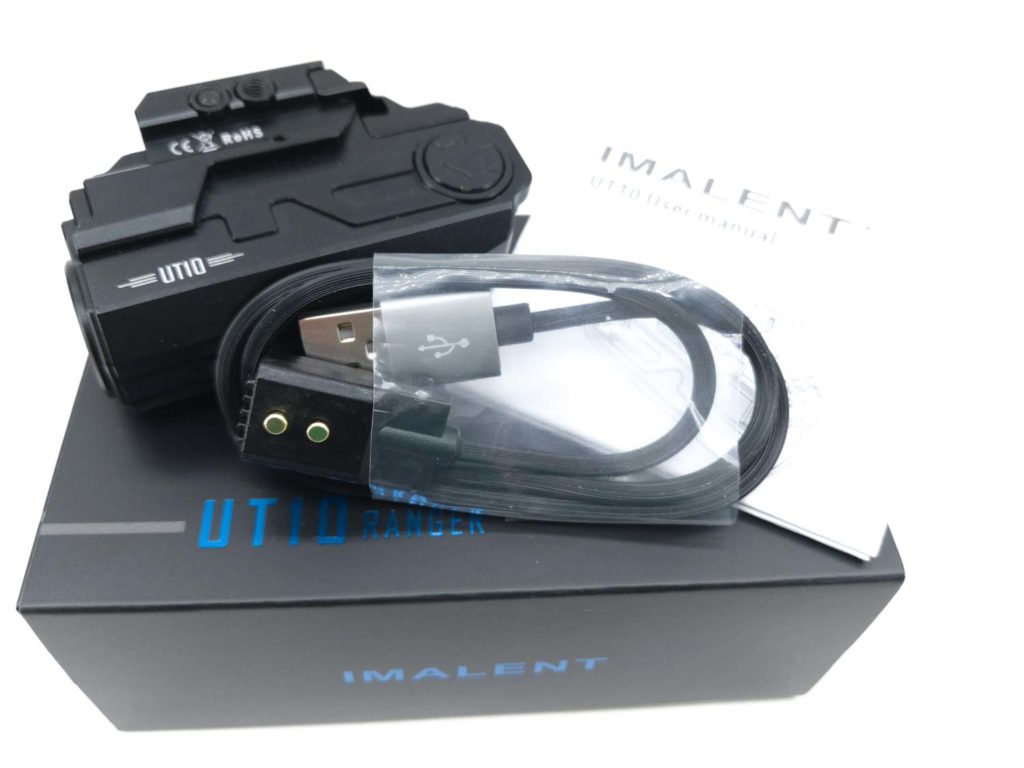
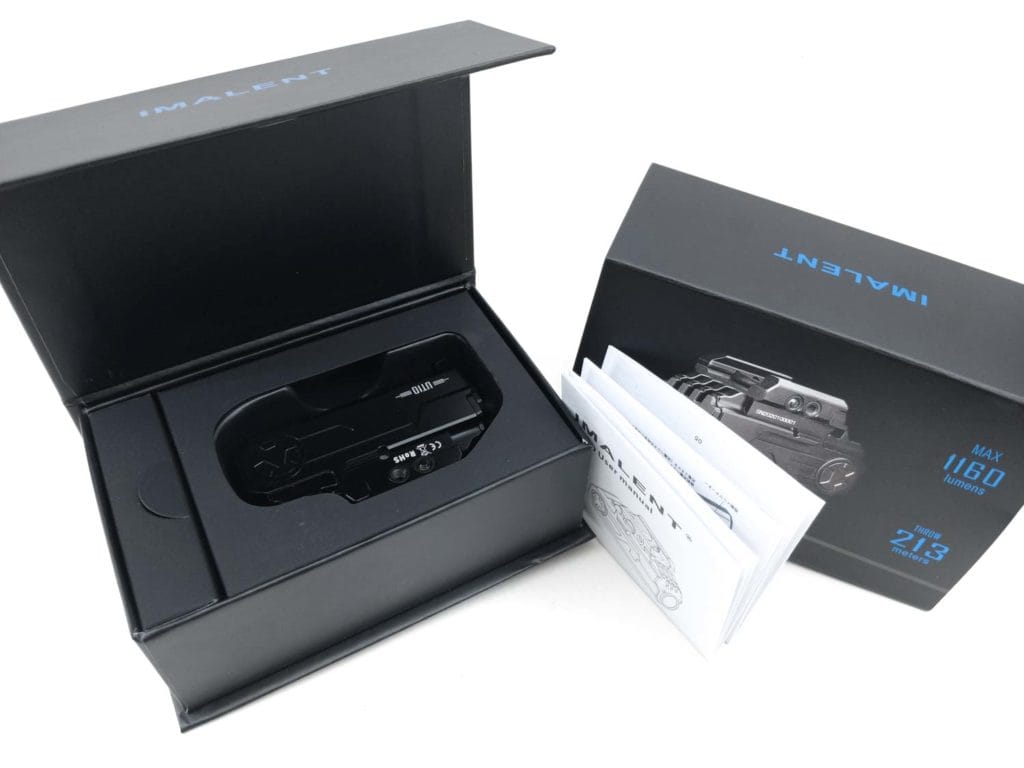
Handling of the light
The UT10 appears to be machined almost entirely out of a solid chunk of aluminum and as such, feels very sturdy and robust. It attaches under your barrel and is compatible with the Picatinny rails and Glock guide rails.
There are two e-switches, one on either side of the light. They essentially provide the same operation. The button covers have a very slight rattle to them. They provide a very clean click, no mush.
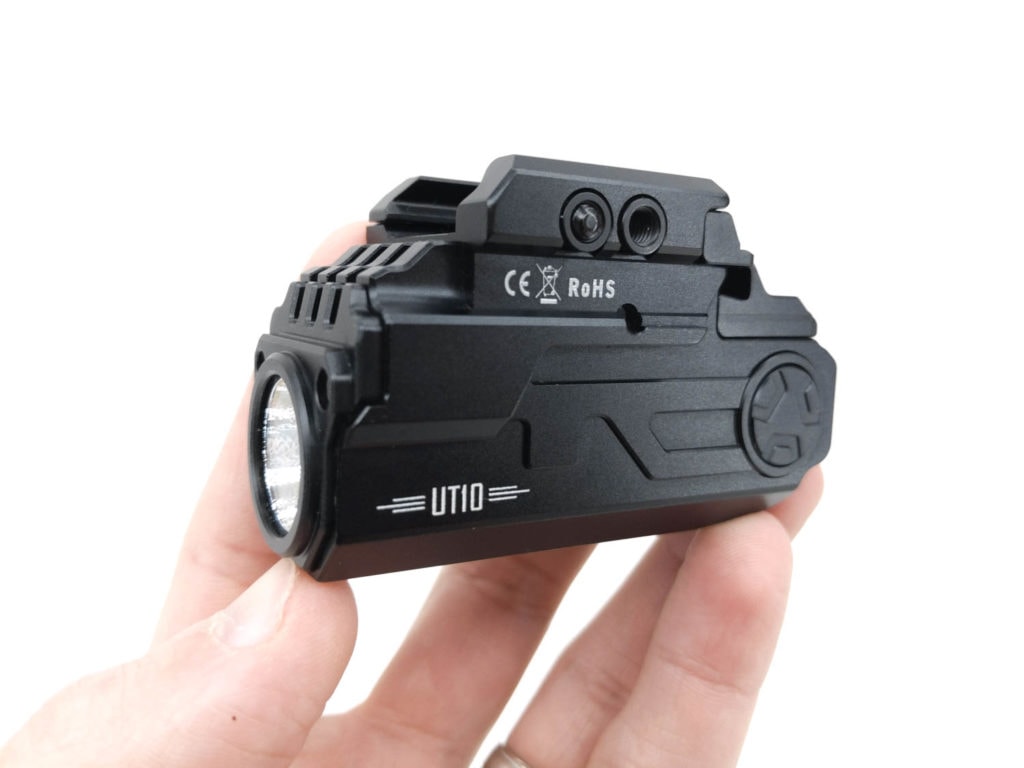
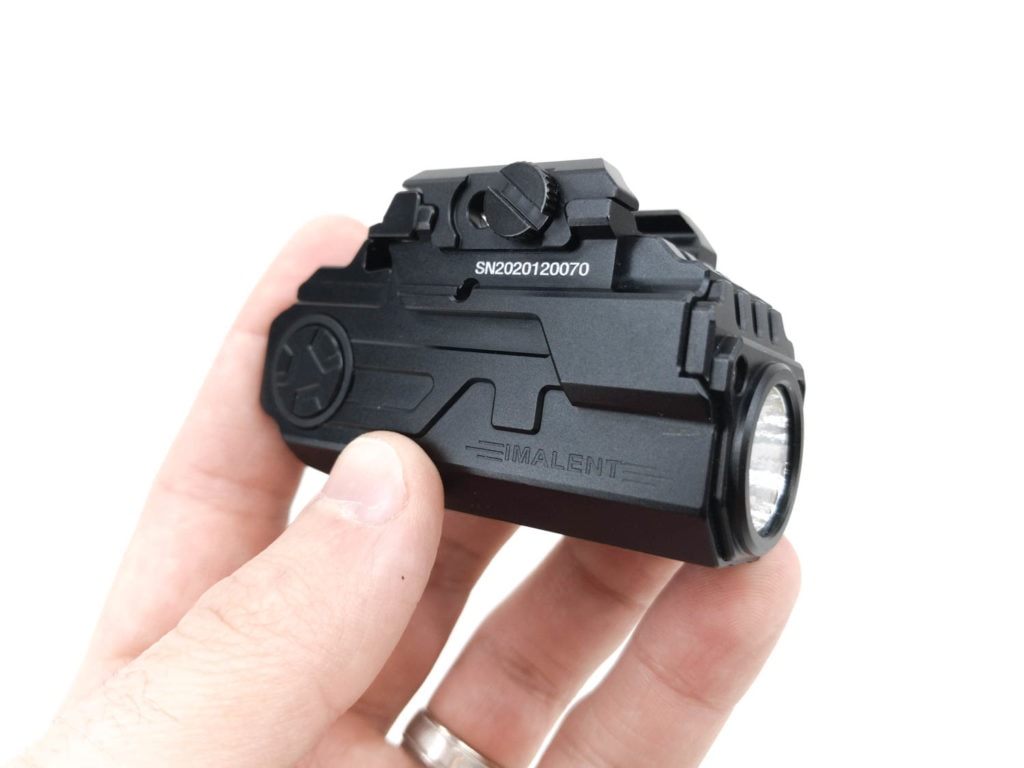
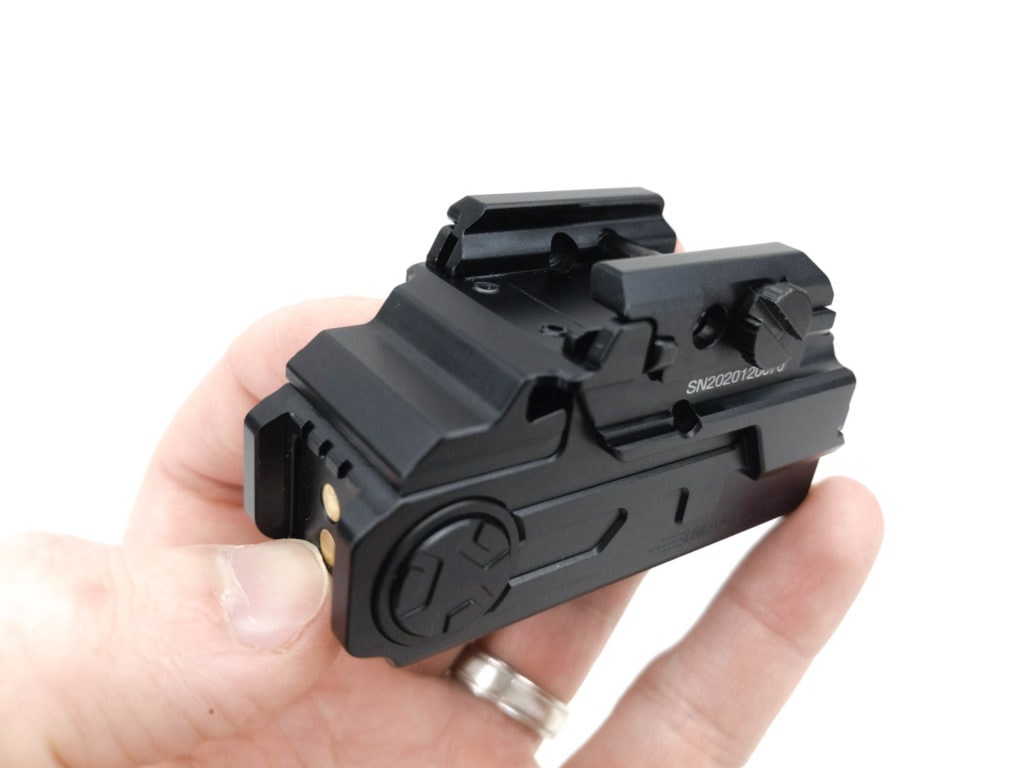
Build Quality, and Warranty
Imalent says that the body is composed of aerospace-grade aluminum alloy and is wear-resistant Type III hard-anodized. On my sample, the finish looks good and is on the matte end of the spectrum. It appears to be well machined, there are no rough edges or sharp corners.
The Imalent warranty policy says that products may be exchanged for a replacement within 15 days of purchase. After that, a 60-month free-repair window kicks in. After 60 months, they offer a limited warranty that covers the cost of labor, but not parts.
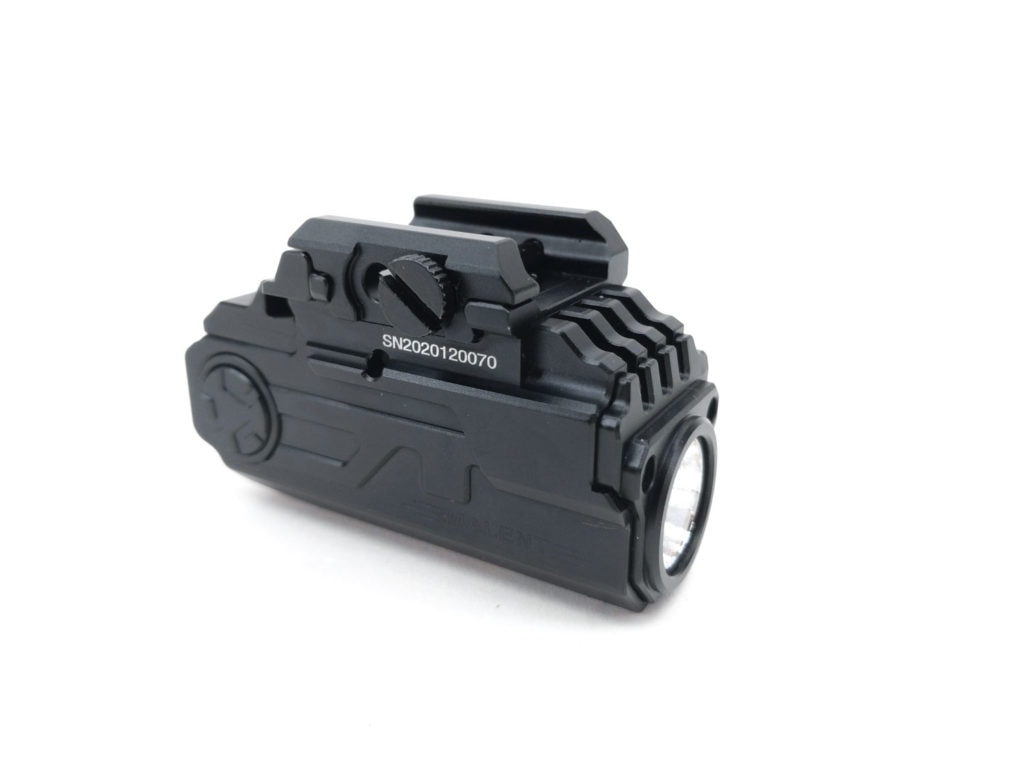
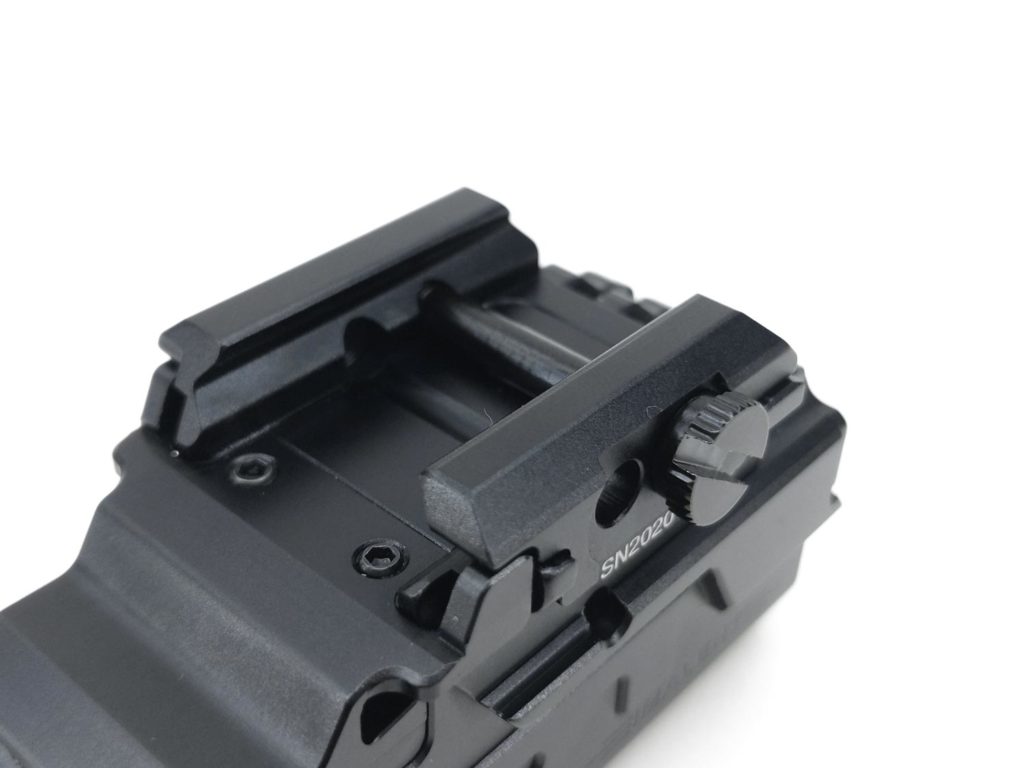
LED, Lens, Bezel, and Reflector
The UT10 Ranger uses a cool while Cree XP-L HI. It is centered in an orange peel reflector. The beam is clean with a decently large hotspot and wide spill. It’s best suited for fairly close range duties, but then again, so is a pistol.
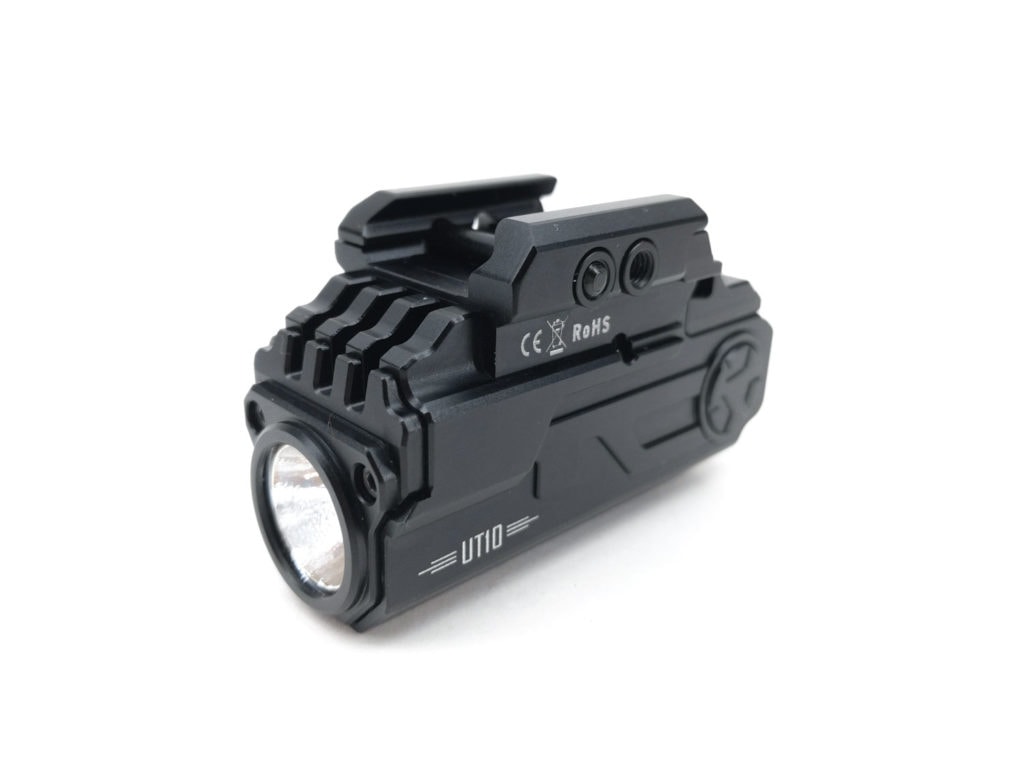
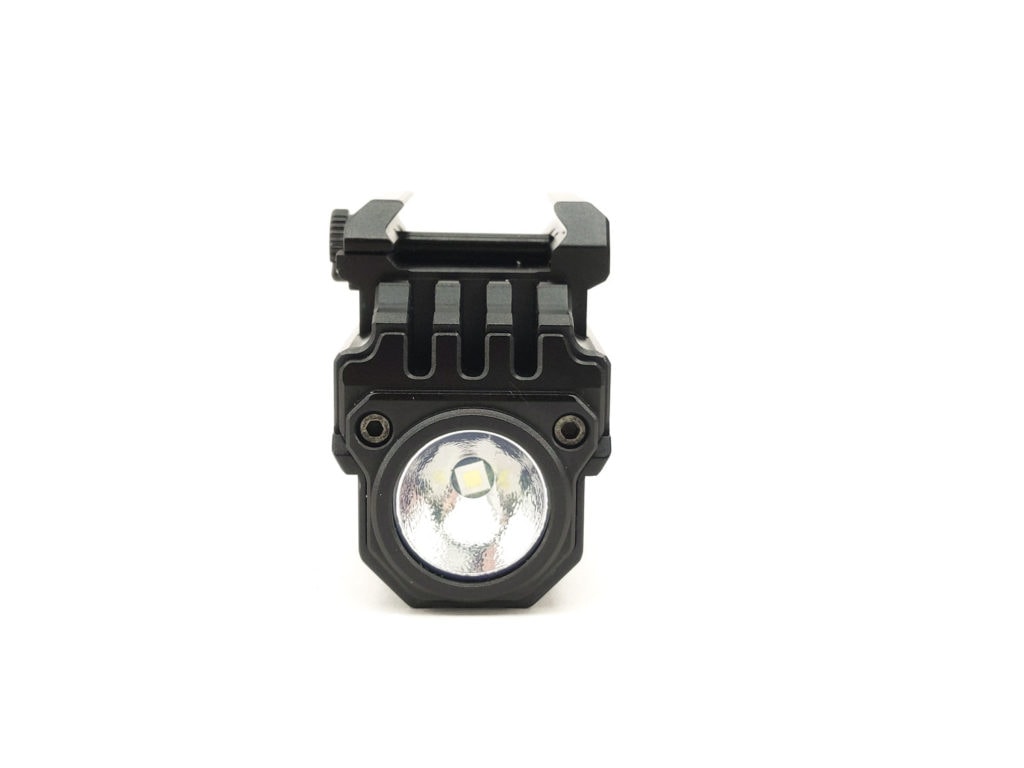
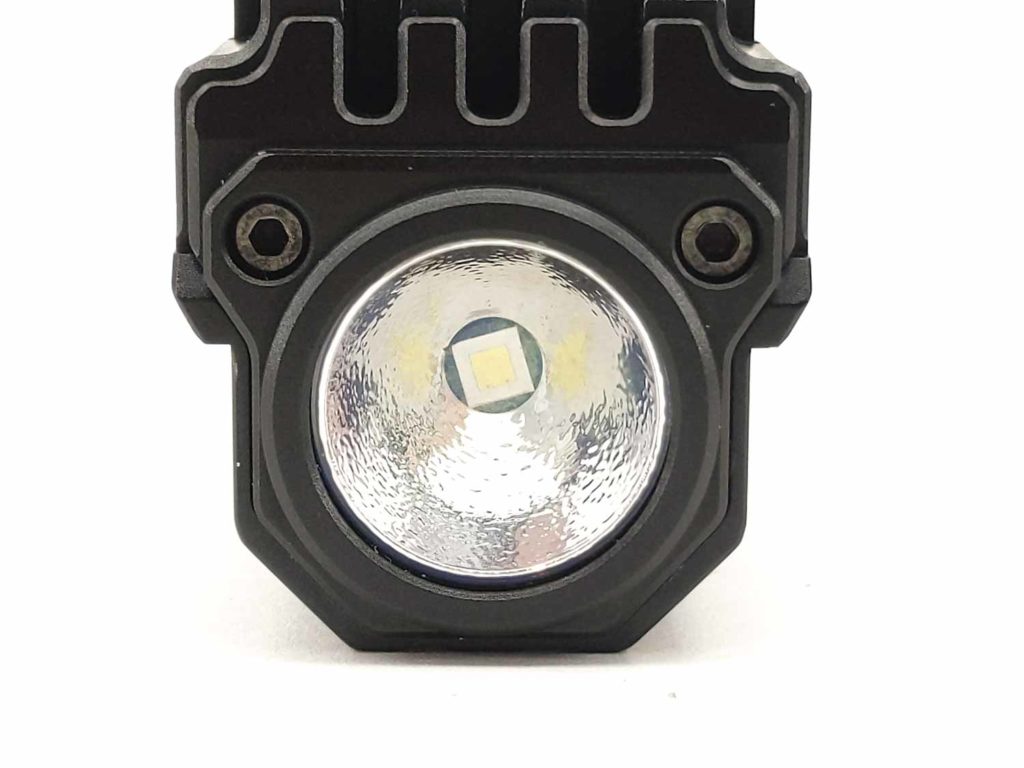
Dimensions
- Length: 72.6 mm / 2.9 inches
- Width: 34 mm / 1.3 inches
- Height: 44 mm / 1.7 inches
Weight:
- With cells: 127 g / 4.5 oz
Popular Flashlight Comparison
Next is a comparison with some of the best flashlights.
From left to right: Reylight Ti LAN, Lumintop Tool Ti, Imalent UT10, Sofirn SP10S, Utorch UT01
From left to right: 26650 battery, Imalent UT10
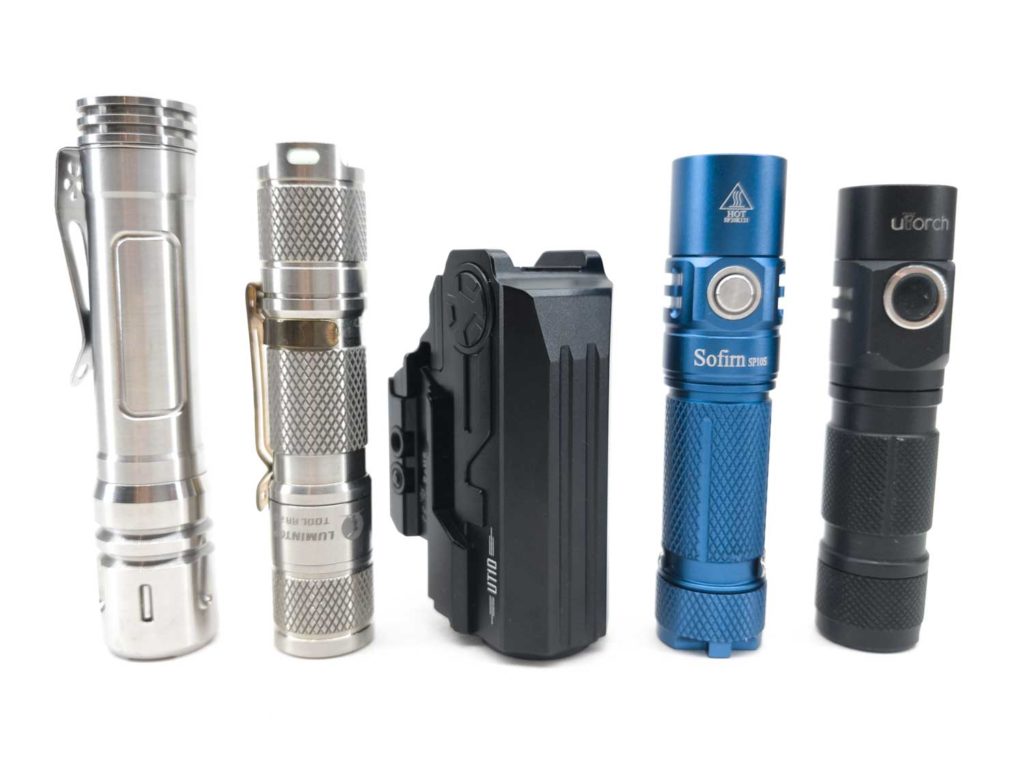
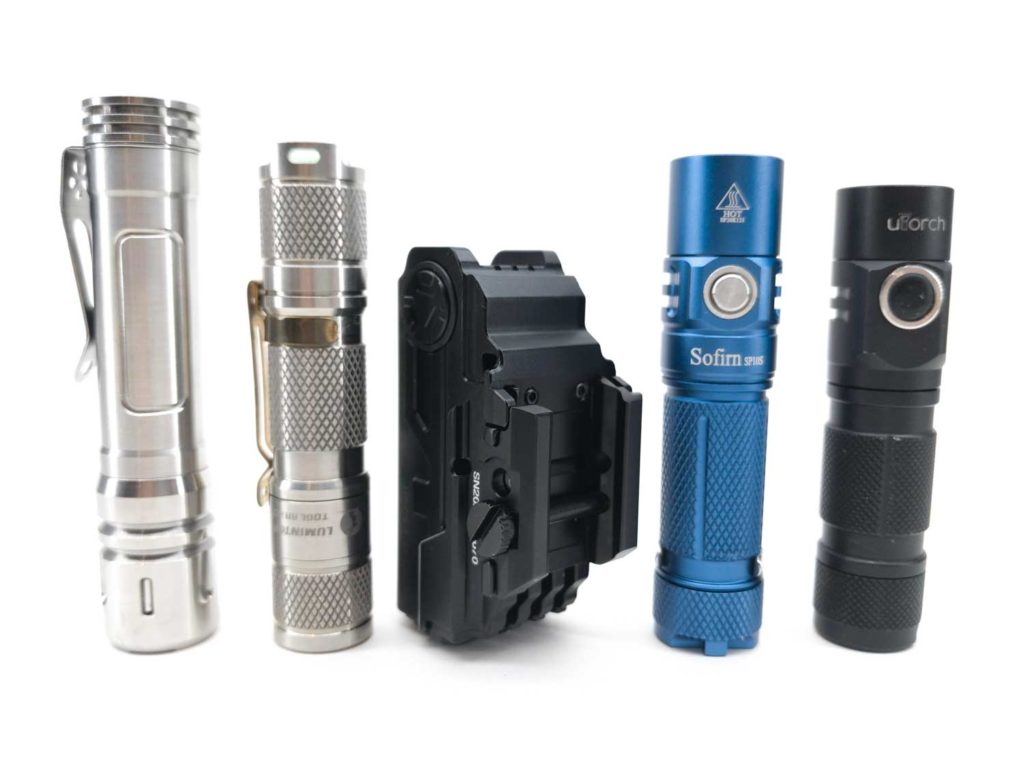
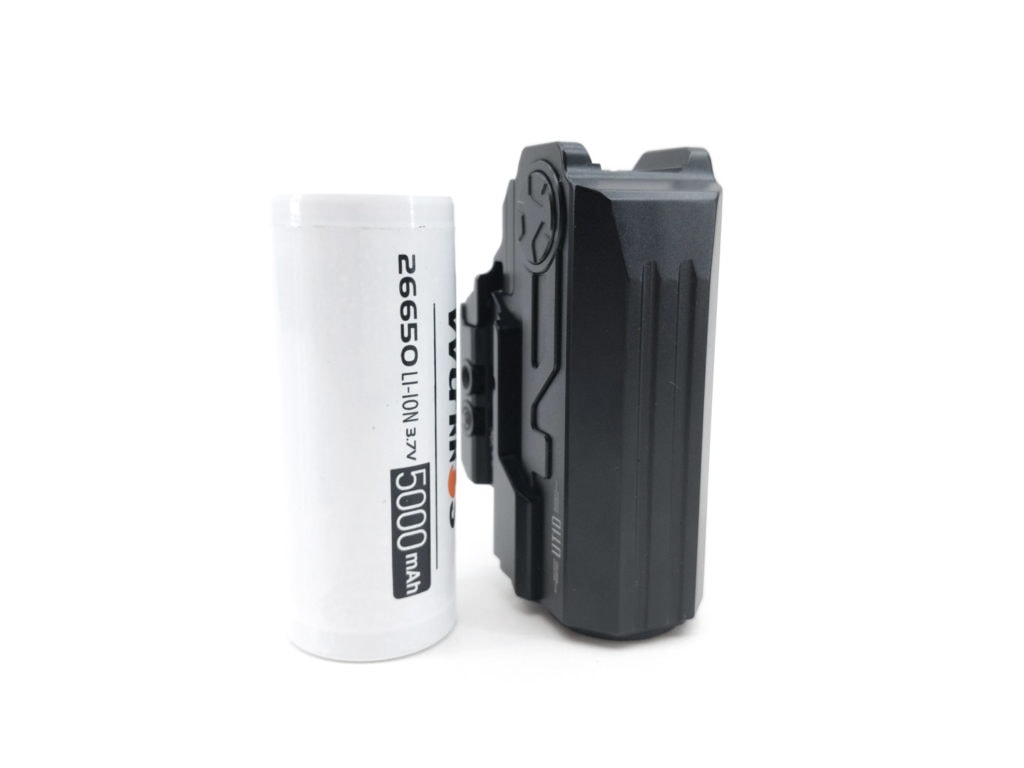
Driver & User Interface:
The Imalent UT10 has two e-switches, one on either side. They function the same. Overall, the UI is necessarily simplistic – it does exactly what it needs to do.
Modes: Low, High, Strobe
From OFF:
- Single click: last used mode
- Triple click: battery check
- 4x click: lock-out
- Single click both switches at the same time: strobe
From ON:
- Single click: turns off
- Double click: switches between low and high
- Triple click: battery check
- Single click both switches at the same time: strobe
Mode memory:
- Yes, there is mode memory
Strobe/blinkies
- There is a single Strobe mode, activated by pressing both buttons at the same time
Lock-out mode:
- Lock-out mode is enabled by 4 clicks from off. Another 4 clicks will disable it.
PWM
- There is no PWM in high mode, low mode has 20.1 kHz PWM (not visible)
Additional info: for the triple-click (battery-check) and quad-click (lock-out) sequences, you have to press very very fast. I found it quite difficult to access these modes.
Batteries & Charging
Imalent says that the UT10 houses an 1100 mAh 18350 inside. I’ll take their word for it because there is no readily apparent way of accessing the battery.
The battery is charged with the included magnetic charging cable. It attaches at the rear of the light and is directional. The magnetic attachment is strong, which would normally be a good thing, but the placement of the magnets appears to be slightly off and actually makes it difficult to get the charging connector in the right location. The magnets kept pulling the charging cord off of the charging contacts.
Another frustration in charging… you know how I said the charging contacts are at the rear of the light? Oh yeah, that’s right where it’s butted up against your trigger guard. So in order to charge the UT10 you need to loosen it up and slide it forward (or off). Not very convenient to say the least.
Oh, and the icing on the cake… the battery/charging indicator LED are red/green based. Not a good experience for us, colorblind people.
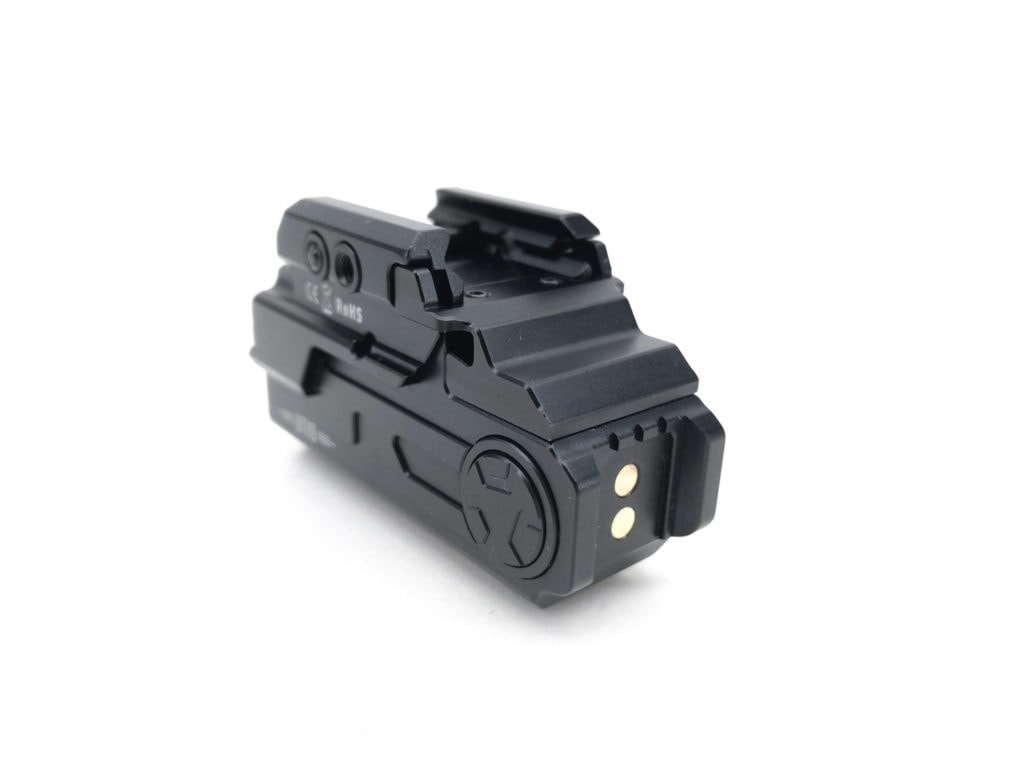
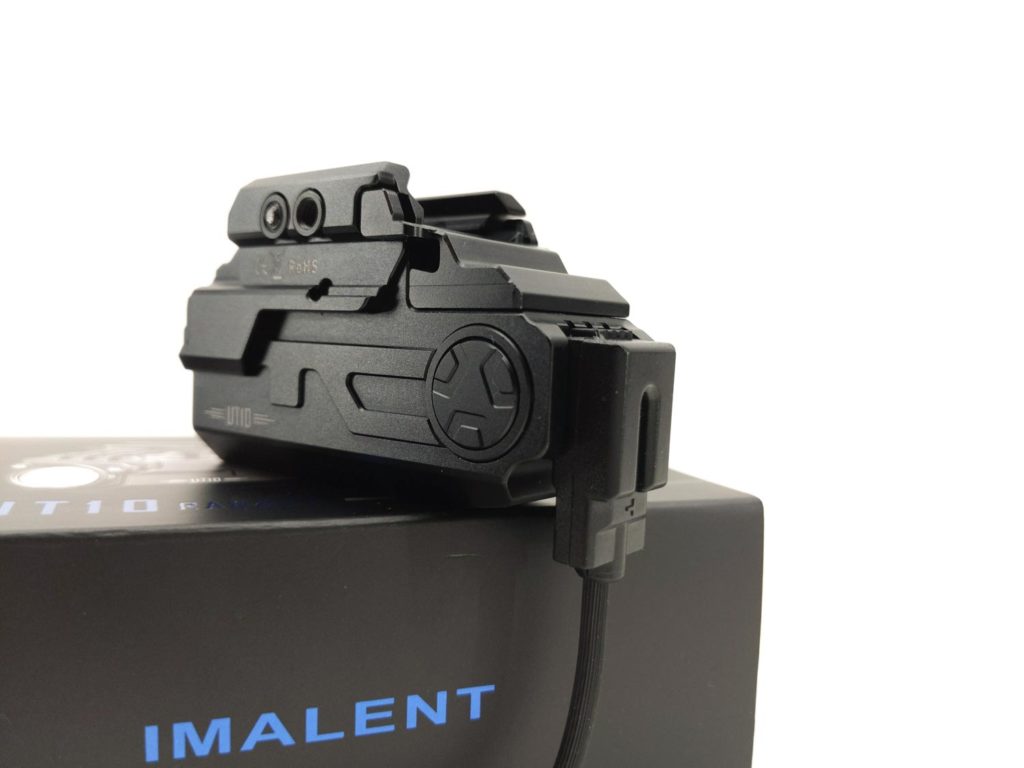
Performance
For current measurements, an ANENG AN8008 multimeter and UNI-T UT210E clamp meter were used. Lux was measured by a UNI-T UT383 BT at 5 meters. Lumens were measured in a homemade lumen tube using a TSL2591 sensor, calibrated with a Maukka calibration light. The temperature was monitored with a MLX90614 IR temperature sensor.
Runtime graph
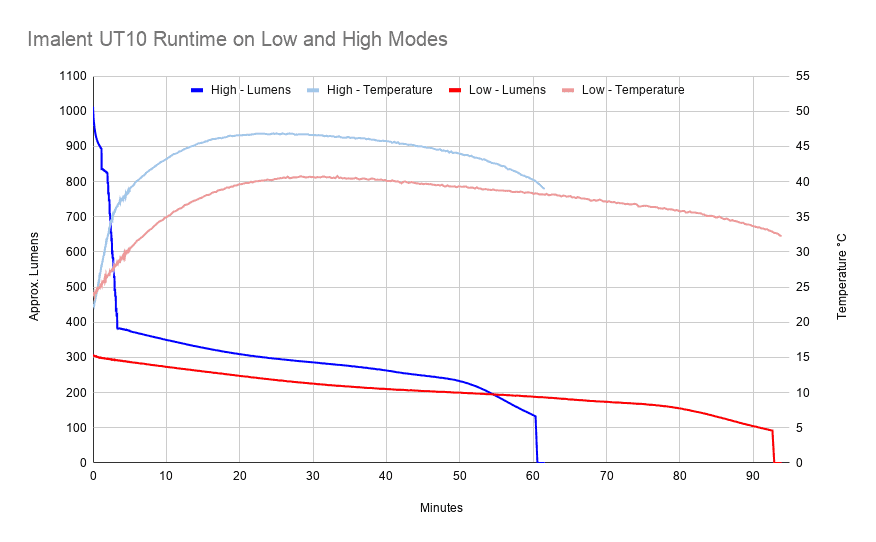
I tested runtime on both High and Low modes. For the High mode, it started out at 1014 lumens and was down to 921 lumens by 30 seconds. Output gradually stepped down starting at 2 minutes and settled in around 343 lumens. The output dropped slowly until the light turned off at the 59-minute mark. Imalent claims a 78-minute runtime.
On the Low runtime test, lumens started at 308 and were 302 at 30 seconds. Output slowly declined over the course of the test, and the light eventually turned off at 93 minutes. Imalent claims a 2 hour runtime.
Lumen measurements (for each mode)
- Low: 302 lm (spec: 300 lm)
- High @ 0s: 1014 lm
- High @ 30s: 921 lm (spec: 1160 lm)
Throw numbers:
- Low, intensity: 4,166 cd
- Low, throw: 129 meters
- High, intensity: 13,511 cd (spec: 5,690 cd)
- High, throw: 232 meters (spec: 213 m)
Beamshots
- Indoor close range beamshot against white paper
- Outdoor beam shots are taken at 25m (82ft) using a Pixel 3 set to ISO 200 with ½ second exposure time
- Imalent UT10
- Mateminco MT07 (Astrolux MF01 Mini)
- Astrolux EC01 with SST40
- Astrolux Copper FT03 Mini with XHP50.2
- Acebeam L35 with XHP70.2
- Convoy M21C-U
- Convoy L2 with dedomed SST40
- Astrolux Copper FT03 with SBT90.2









Disclaimer: This flashlight was sent to me for review at no cost by Imalent. I have not been paid to review, nor have I been holding back on problems or defects.
Final Verdict
Pros
- Easy to use
- Solidly built
- Throws farther than specs
Cons
- Lower-than-spec output
- Shorter-than-spec runtime
- Half-baked magnetic charging
- Built-in cell
- Hyper-fast button sequence timing

3 stars: ★★★
I’d give the Imalent UT10 “Ranger” 3 stars. It gets the job done and it’s fairly easy to use, aside from the clunky charging situation. If you’re not concerned with the UT10 hitting the claimed specs, and you don’t plan on charging it too often, it could be a good light for you. And if you plan on locking it out, you better have lightning-fast fingers. If you’re looking for a pistol light and the Ranger is around, he might be worth checking out. But if there are other options around, it might be better to browse around.
Imalent UT10 For Sale
The UT10 is discontinued. Interested in an alternative? Check out the following guides:
- Buyers guide: the best EDC flashlight
- Overview: Imalent flashlight reviews
1lumen selects and reviews products personally. We may earn affiliate commissions through our links, which help support our testing.